Apple Macbook Air 13 M3 vs Asus Zenbook 14 OLED (Q425M): Which ultraportable laptop is best for you?
Is the latest Zenbook 14 a better Macbook than the Macbook Air 13 M3?
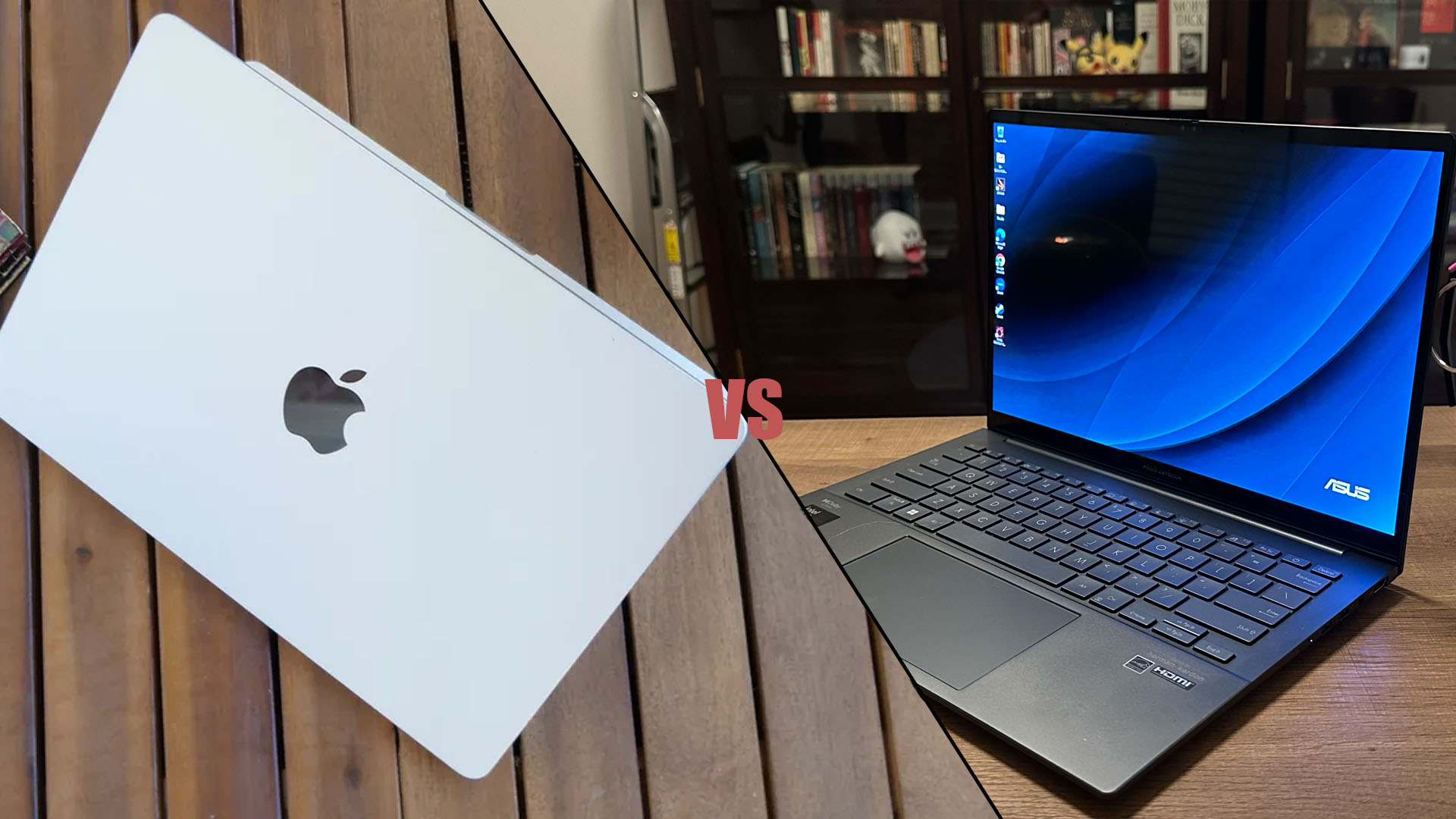
The Asus Zenbook 14 OLED (Q425M) and Apple Macbook Air 13 M3 are both ultraportable powerhouse laptops that are destined for our best laptops page. They are contenders for our laptops with the longest battery life as well, though the Zenbook 14 OLED does have the edge on battery life. With performance, battery life, and stunning displays there are plenty of similarities between the two laptops.
And if you’re looking for an ultraportable laptop with good battery life and strong performance these two recently released laptops are likely near the top of your list. But how do these two laptops stack up against one another in a direct head-to-head?
Design
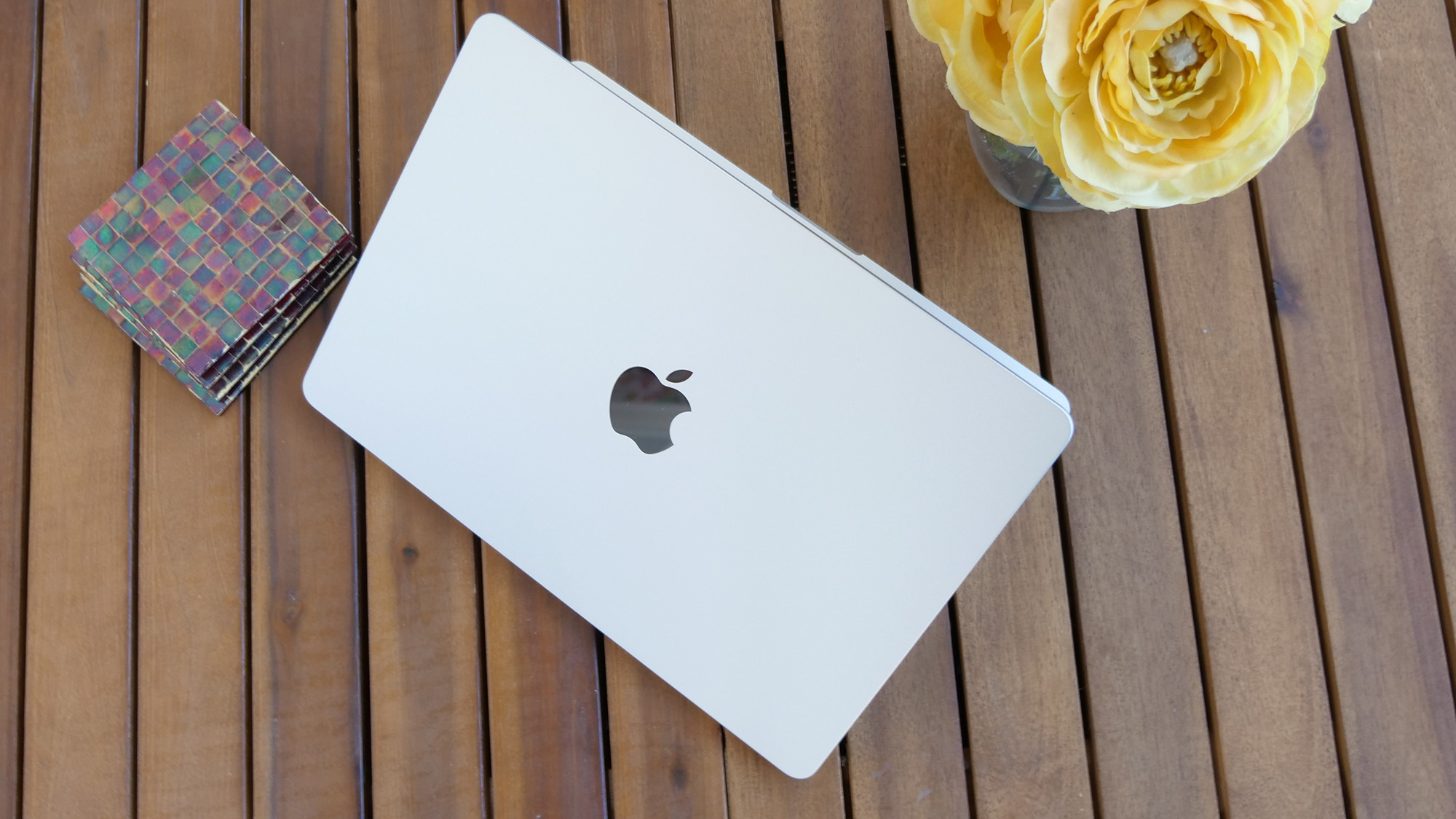
When it comes to design, both of these laptops have kept things pretty safe. The Apple Macbook Air 13 hasn’t changed much in the last several years though the M2 version did add MagSafe charging and finally reduce the massive bezels. The Asus Zenbook 14 OLED (Q425M) is also, similarly, a very familiar design. Both laptops are ultra-thin and light designs with minimalist aesthetics. True there are differences between them, but both laptops were designed to be more iconic than trendy. Which means design changes in the Macbook and Zenbook lines are slow to take effect.
The Macbook Air’s design is certainly a bit more of an icon after decades of Apple sticking to its rounded-edge aluminum design. And the Macbook Air also comes in more colors, even if they are varying shades of a monochrome color palette. The Asus Zenbook 14 OLED (Q425M) comes in a Jasper Gray finish, while the Macbook Air 13 M3 comes in Midnight, Starlight, Space Gray, and Silver.
So for its iconic status and multiple color options, this one is edged slightly toward the Macbook Air.
Winner: Apple Macbook Air 13 M3
Ports
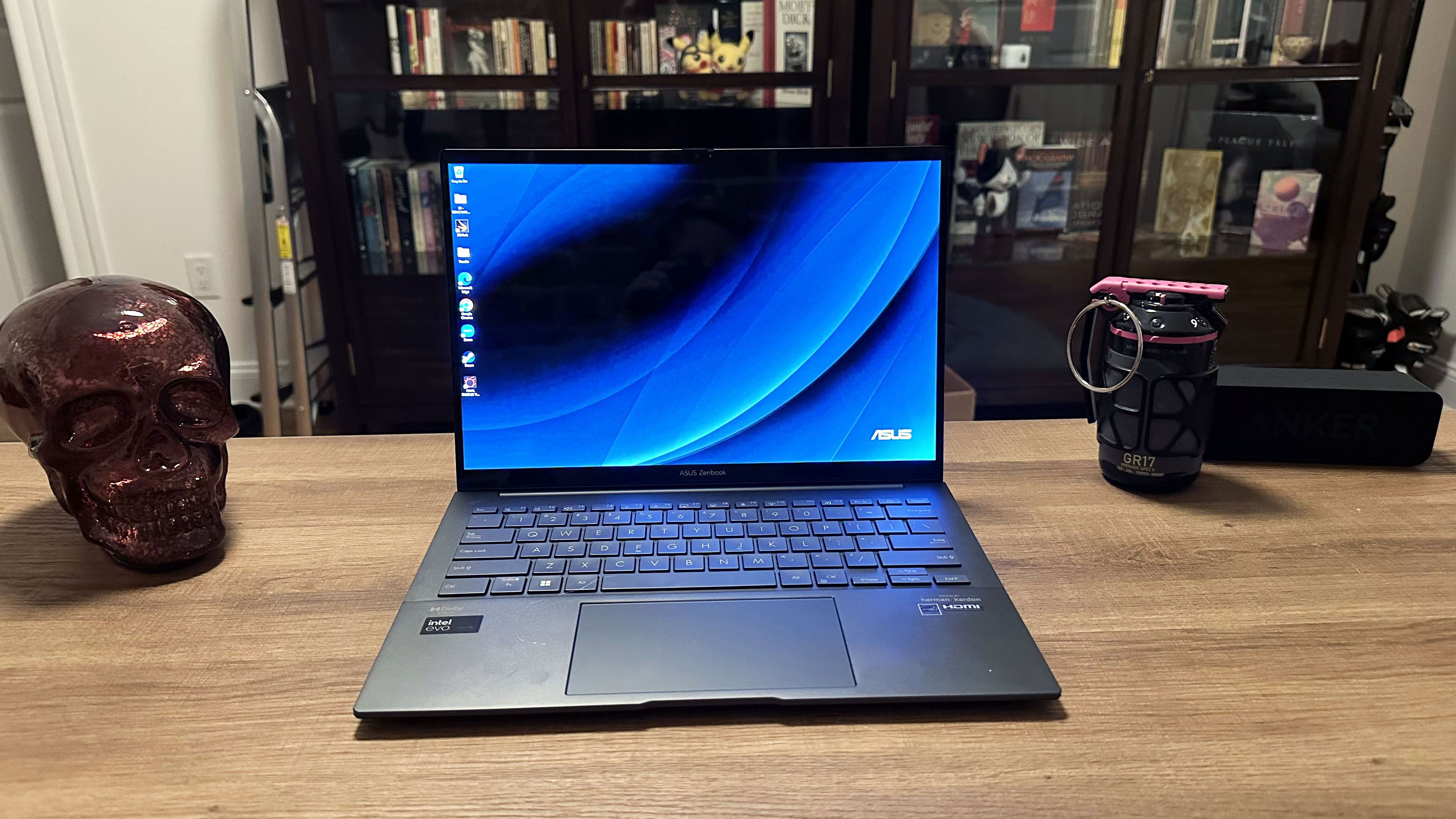
As ultraportable laptops with thin designs, port availability is scarce on both machines. So you’ll likely be embracing the USB Type-C hub or laptop docking station lifestyle when setting up your workstation either way.
Get The Snapshot, our free newsletter on the future of computing
Sign up to receive The Snapshot, a free special dispatch from Laptop Mag, in your inbox.
The Macbook Air 13 M3 has a MagSafe charging port, two Thunderbolt 4 USB-C ports, and an audio jack. The Asus Zenbook 14 OLED (Q425M) has two Thunderbolt 4 USB-C ports, one USB 3.2 Type-A port, a full-sized HDMI 2.1 port, and one audio combo jack. So with the Zenbook 14, you lose one USB-C port to charging, and gain a USB-A port to replace it. The Zenbook also has its own HDMI hookup, so you can get away with skipping a hub if you mostly use Bluetooth accessories.
Because you do have greater flexibility in not using a USB Hub with the Zenbook 14, we’ll have to cede this one to the Asus laptop.
Winner: Asus Zenbook 14 OLED (Q425M)
Display
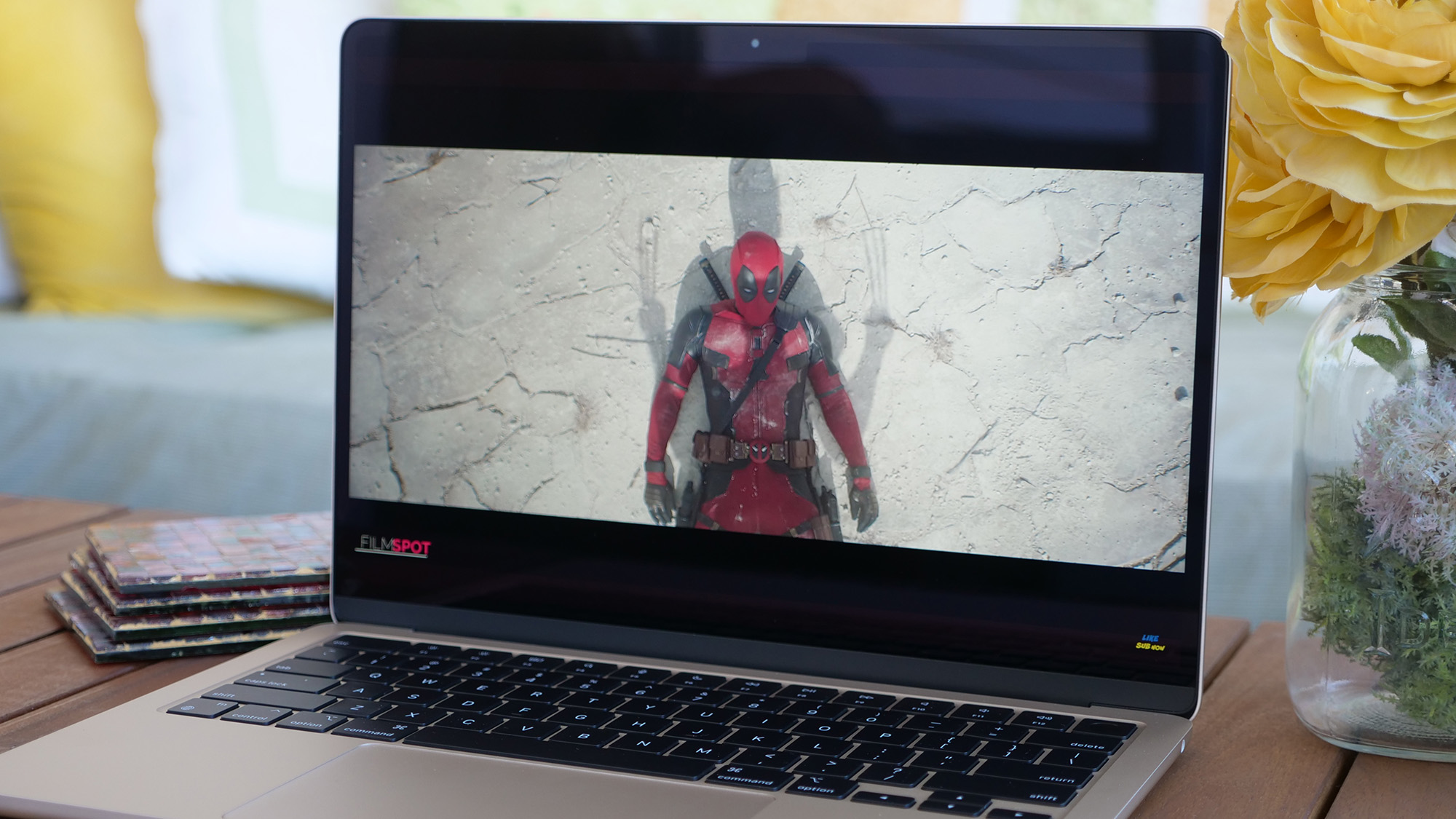
The OLED panel on the Zenbook 14 and the Retina display on the Apple Macbook Air 13 M3 both look stunning, however, they aren’t the brightest or most colorful displays we’ve ever seen.
In terms of color accuracy, the Asus Zenbook 14 OLED (Q425M) has the edge with 79.8% coverage on the DCI-P3 color gamut and a Delta-E accuracy of 0.23 while the Apple Macbook Air 13 M3 has 77.8% coverage of the DCI-P3 gamut with a Delta-E accuracy of 0.21.
In terms of brightness, the Macbook Air has the win with an average of 476 nits while the Zenbook 14 OLED averaged 339 nits.
The color accuracy of both laptops was close enough to be almost inconsequential, leaving brightness as the deciding factor. So this one does edge out to the Macbook Air.
Winner: Apple Macbook Air 13 M3
Performance
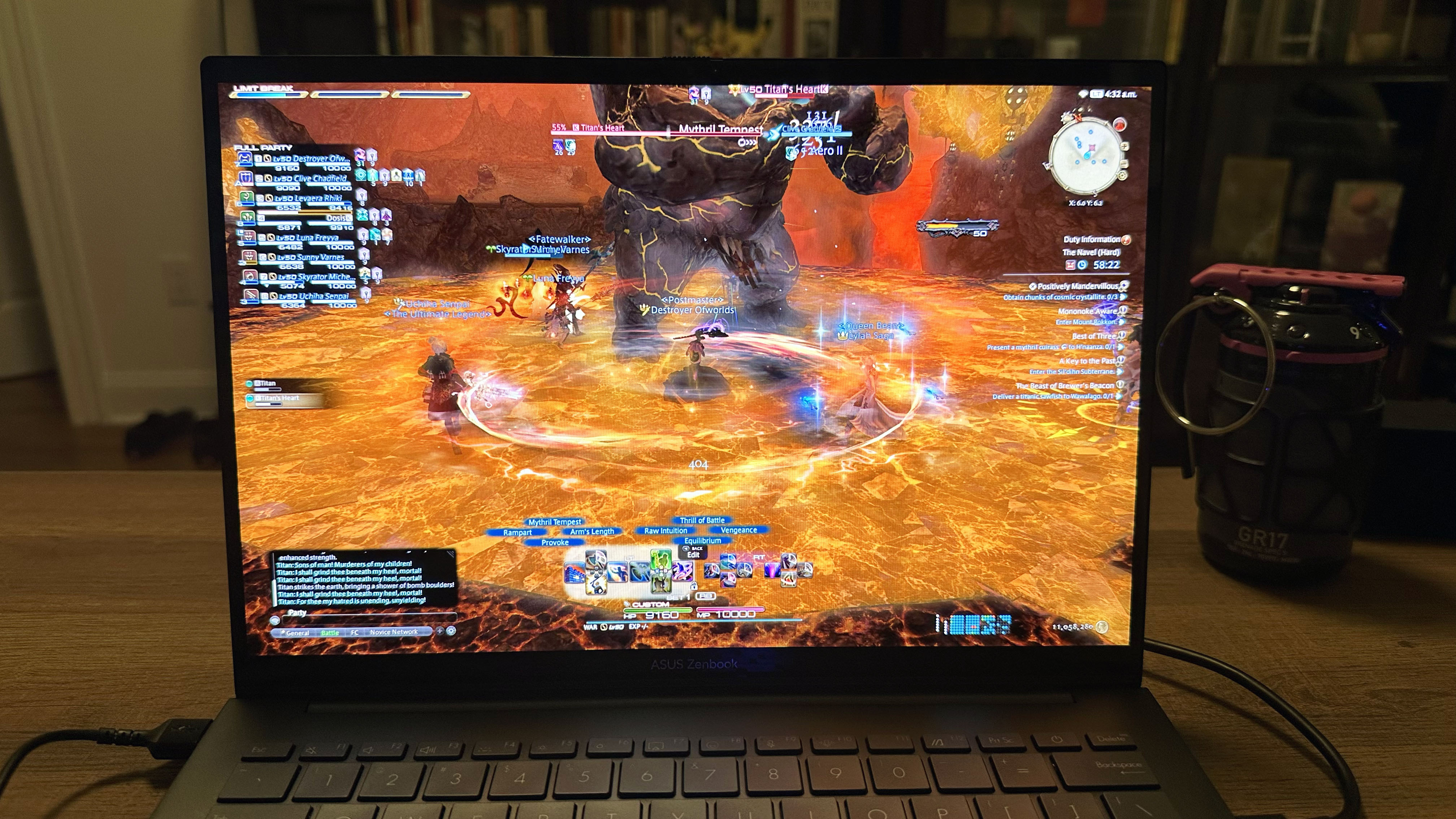
In terms of performance, both laptops did well keeping up with a variety of tasks including hosting numerous Chrome tabs and opening Adobe Photoshop and Premiere Pro at a snap.
In our testing lab, the two laptops were also close on a variety of performance benchmarks. On Geekbench 6.2’s CPU benchmark the Asus Zenbook 14 OLED averaged a multi-core score of 12,707 while the Macbook Air M3 lagged a bit behind at 12,087. In terms of single-core performance, the Macbook Air M3 had the edge with a single-core performance score of 3,082 over the Zenbook’s single-core average of 2,453. So if you’re doing heavy photo or video editing the Macbook Air will have a slight edge.
On our video encoding Handbrake 1.6 benchmark, the Asus Zenbook 14 OLED (Q425M) was a bit faster with a 6:36 average compared to the Macbook Air 13 M3’s average of 7:54.
Of course, the performance of the laptops in our hands on testing was certainly comparable enough that most users won’t notice much difference between them. The Macbook Air 13 M3 has an edge for content creation while the Asus Zenbook 14 OLED has a bit more general performance power. But when it comes to our benchmarks, the Zenbook has the win.
Winner: Asus Zenbook 14 OLED (Q425M)
Graphics

Neither the Asus Zenbook 14 OLED nor the Apple Macbook Air 13 M3 are remotely near the best gaming laptops of 2025. But plenty of people like to be able to play casual games on their laptop even if they primarily use it for web browsing, sending emails, or even photo and video editing. While both laptops can certainly keep up with simple browser games like Bubble Shooter, for anything more complex you will definitely notice a difference between the Asus Zenbook 14’s Intel Arc graphics and the Macbook Air 13’s M3 10-core GPU.
Our cross-platform gaming benchmark runs Sid Meier’s Civilization VI: Gathering Storm at 1080p on medium settings. The Macbook Air 13 M3 had a clear advantage averaging 41 FPS over the Asus Zenbook 14 OLED’s 30 FPS. While neither is going to offer fantastic gaming performance, the Macbook Air does have a pretty substantial lead over the Zenbook.
Winner: Apple Macbook Air 13 M3
Battery life
We’ve already written about how the Asus Zenbook 14 OLED (Q425M) has a better battery life than the Macbook Air M3 laptops, but in case you missed it. Here are the raw numbers.
On the Laptop Mag battery test, which surfs through a series of webpages with the laptop set to 150-nits of brightness, the Asus Zenbook 14 OLED managed to last a shocking 15 hours and 52 minutes while the Apple Macbook Air 13 M3 survived for 15 hours and 13 minutes.
It’s not a huge difference in battery life, but the numbers don’t lie.
Winner: Asus Zenbook 14 OLED (Q425M)
Bottom line
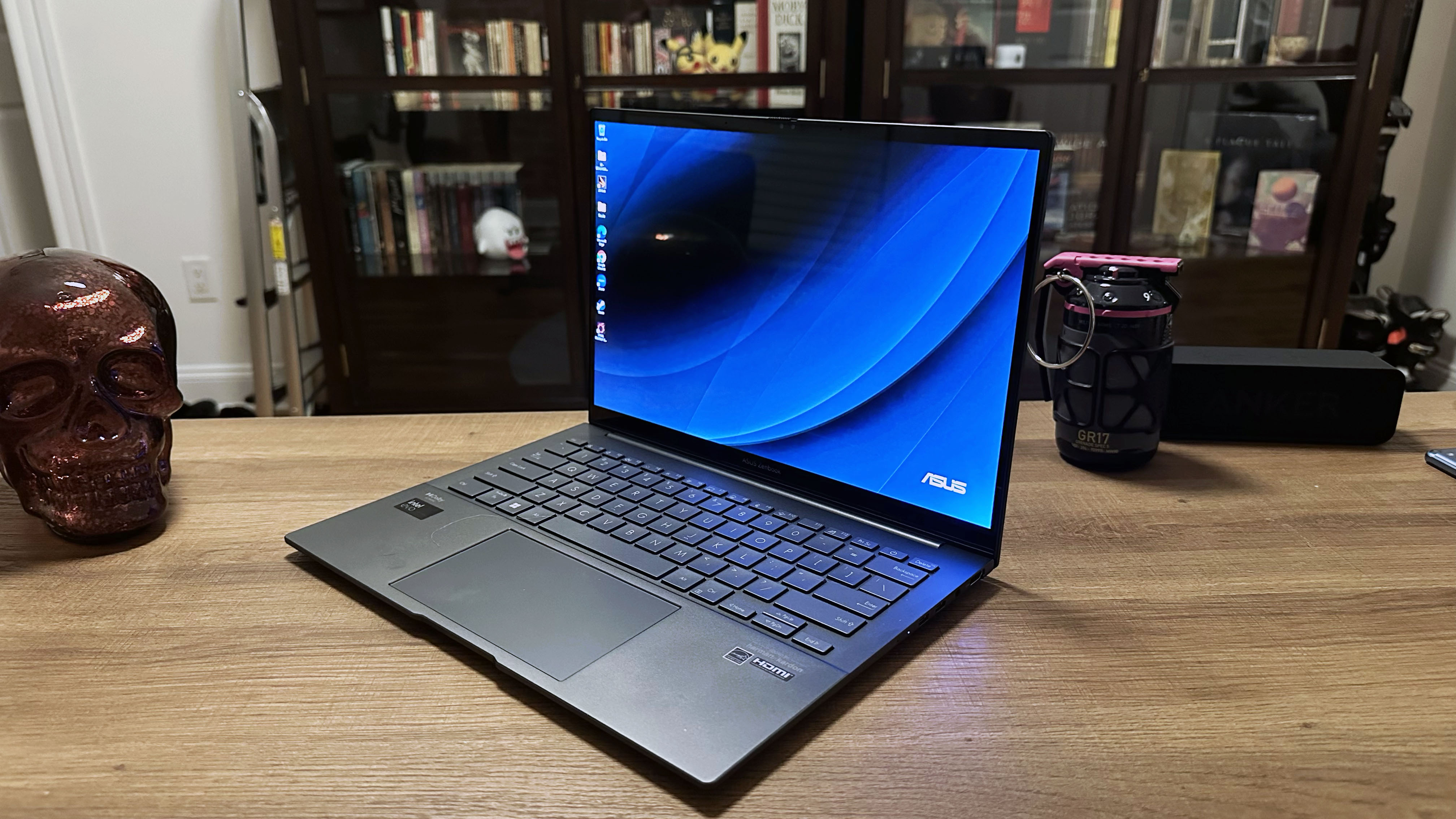
Not only were the wins in each section of this face-off made by rather tight margins, the two laptops are also tied at 3 wins each. So it really does come down to a matter of preference. If you don’t like Windows 11, the Macbook Air is clearly going to be a better choice even if the Zenbook 14 may have a bit more performance power and battery life. If you don’t like macOS then certainly the Zenbook 14 is the better buy.
For those happy enough with either operating system, the Asus Zenbook 14 OLED (Q425M) is a bit better by performance and battery metrics, while also boasting a more varied array of ports. The Apple Macbook Air 13 M3 also has a more iconic design, a brighter display, and better gaming performance. So it comes down to your operating system preference, what you’re going to use the laptop for, and what metrics you value most highly because this is a pretty perfect draw between both laptops.
Winner: Draw

A former lab gremlin for Tom's Guide, Laptop Mag, Tom's Hardware, and TechRadar; Madeline has escaped the labs to join Laptop Mag as a Staff Writer. With over a decade of experience writing about tech and gaming, she may actually know a thing or two. Sometimes. When she isn't writing about the latest laptops and AI software, Madeline likes to throw herself into the ocean as a PADI scuba diving instructor and underwater photography enthusiast.
